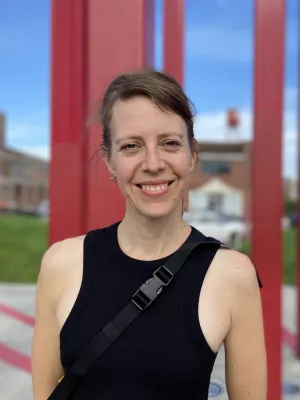
Melissa García
Associate senior lecturer

Natural outdoor environments’ health effects in gentrifying neighborhoods : Disruptive green landscapes for underprivileged neighborhood residents
Author
Summary, in English
Background: Cities are restoring existing natural outdoor environments (NOE) or creating new ones to address diverse socio-environmental and health challenges. The idea that NOE provide health benefits is supported by the therapeutic landscapes concept. However, several scholars suggest that NOE interventions may not equitably serve all urban residents and may be affected by processes such as gentrification. Applying the therapeutic landscapes concept, this study assesses the impacts of gentrification processes on the associations between NOE and the health of underprivileged, often long-term, neighborhood residents. Methods: We examined five neighborhoods in five cities in Canada, the United States and Western Europe. Our case studies were neighborhoods experiencing gentrification processes and NOE interventions. In each city, we conducted semi-structured qualitative interviews on NOE interventions, equity/justice, gentrification and health (n = 117) with case study neighborhood residents, community-based organizations, neighborhood resident leaders and other stakeholders such as public agencies staff. Results: Respondents highlighted a variety of interconnected and overlapping factors: the insufficient benefits of NOE to counterbalance other factors detrimental to health, the use of NOE for city branding and housing marketing despite pollution, unwelcomeness, increase of conflicts, threats to physical displacement for themselves and their social networks, unattractiveness, deficient routes, inadequate NOE maintenance and lack of safety in NOE. Conclusions: Our study demonstrated that underprivileged neighborhood residents were perceived to experience new or improved NOE as what we call “disruptive green landscapes” (i.e. non-therapeutic landscapes with which they were not physically or emotionally engaged) instead of as therapeutic landscapes.
Publishing year
2021-06
Language
English
Publication/Series
Social Science and Medicine
Volume
279
Links
Document type
Journal article
Publisher
Elsevier
Topic
- Human Geography
Keywords
- Gentrification
- Green spaces
- Health
- Nature
- Therapeutic landscapes
Status
Published
ISBN/ISSN/Other
- ISSN: 0277-9536